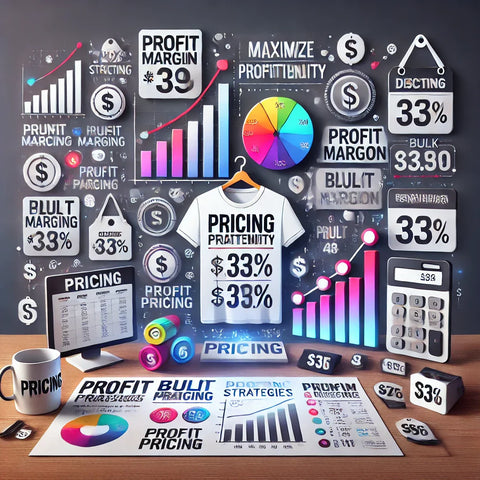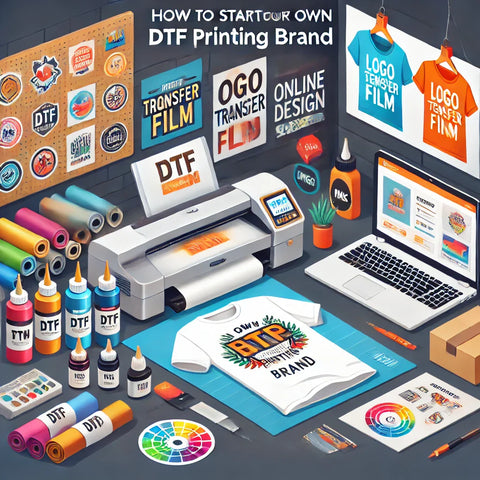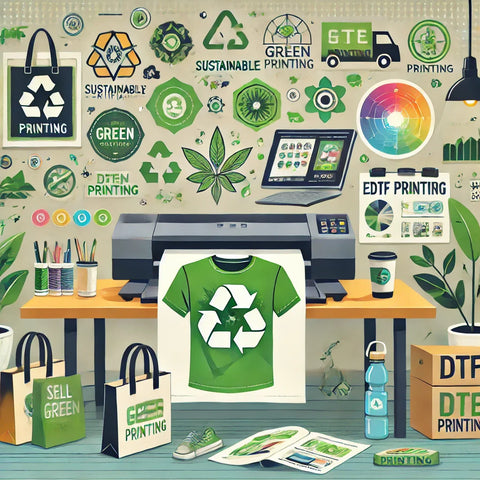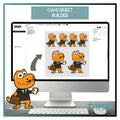Setting the right price for your custom-printed products is crucial to maximizing profit and staying competitive in the market. Whether you’re selling DTF-printed apparel, custom mugs, tote bags, or posters, your pricing strategy must balance affordability for customers and profitability for your business.
If you price too low, you risk losing profit margins. Price too high, and you might scare off potential buyers. So, how do you find the right balance?
In this guide, we’ll cover the best pricing strategies to ensure your business remains profitable while staying attractive to customers.
1. Understanding Your Costs Before Setting Prices
Before you can determine the right price, you need to calculate your total costs.
✔ Key Cost Factors in Pricing Printed Products:
| Cost Type | Description | Example |
|---|---|---|
| Material Costs | Cost of blank products, ink, transfer sheets, packaging | $5 per t-shirt |
| Printing & Production Costs | Cost of DTF printing, heat press, labor | $3 per print |
| Shipping & Handling | Postage fees, packaging, and fulfillment costs | $4 per order |
| Platform & Transaction Fees | Shopify, Etsy, or payment processing fees | 5% – 10% of the sale |
| Marketing Costs | Advertising, promotions, influencer collaborations | $5 per sale |
📌 Example: If you spend $5 on materials, $3 on printing, $4 on shipping, and $5 on marketing, your total cost per unit is $17. Your price should be high enough to cover these expenses and ensure profit.
🚀 Pro Tip: Always calculate costs per unit and adjust pricing based on expenses.
2. Best Pricing Strategies for Printed Products
1️⃣ Cost-Plus Pricing (Markup Pricing)
✔ Formula:
Total Cost per Item + Desired Profit Margin = Selling Price
📌 Example:
If your total cost per hoodie is $15, and you want a 50% profit margin, the price should be:
✅ $15 + (15 × 50%) = $22.50
🚀 Pro Tip: This method ensures every sale remains profitable, but it doesn’t consider competitor pricing or market demand.
2️⃣ Competitive Pricing (Market-Based Pricing)
✔ Best for staying competitive in crowded markets like Etsy & Amazon.
✔ Steps:
- Research competitors selling similar DTF-printed products.
- Check average pricing and customer expectations.
- Price slightly lower or higher depending on your brand positioning.
📌 Example: If competitors sell custom hoodies for $40, you can:
- Match the price ($40) to compete directly.
- Go slightly lower ($38) to attract price-sensitive buyers.
- Go higher ($45) if your product offers better quality, premium packaging, or exclusive designs.
🚀 Pro Tip: Add extra value like personalized packaging or premium fabrics to justify higher prices.
3️⃣ Value-Based Pricing (Brand Positioning Strategy)
✔ Set prices based on the perceived value of your product rather than just costs.
✔ Works best if your brand offers high-end, premium, or unique designs.
📌 Example: A limited-edition DTF-printed hoodie with artistic, custom designs can be priced at $80 – $100, even if the production cost is only $20.
🚀 Pro Tip: Use branding, influencer marketing, and premium packaging to make products appear high-value and justify premium pricing.
4️⃣ Psychological Pricing (Boost Conversions with Smart Prices)
✔ Pricing Tricks That Work:
- Charm Pricing – Use prices ending in .99 or .95 (e.g., $19.99 instead of $20) to make the price seem lower.
- Anchor Pricing – Show the original price crossed out next to the discounted price to create urgency.
- Bundle Pricing – Offer discounts when customers buy multiple items (e.g., "Buy 2, Get 1 Free").
📌 Example: A DTF-printed streetwear brand could list its premium hoodies at $49.99 instead of $50 to psychologically appear more affordable.
🚀 Pro Tip: Display discounts with limited-time offers to encourage quick purchases.
3. How to Test and Adjust Pricing for Maximum Profit
Pricing is not static—you should test different price points to find the best balance between profit and customer demand.
✔ Steps to Optimize Pricing:
1️⃣ A/B Test Different Prices – Try listing products at $29.99 vs. $34.99 and see which sells better.
2️⃣ Track Conversion Rates – Use Shopify or Etsy analytics to check how price changes affect sales volume.
3️⃣ Offer Seasonal Discounts – Run holiday or Black Friday promotions and see how customers respond.
4️⃣ Monitor Competitor Prices – Stay updated on what similar brands are charging.
📌 Example: If you increase the price of a DTF-printed T-shirt from $20 to $25, but sales remain stable, you successfully increased your profit margins.
🚀 Pro Tip: Experiment with limited-time offers and flash sales to boost conversions.
4. How to Increase Per Order Profit with Upsells & Bundles
✔ Best Ways to Boost Profitability Without Raising Prices:
1️⃣ Product Bundles: Offer deals like "Buy 3 T-Shirts, Get 10% Off".
2️⃣ Personalization Upsells: Charge extra for customized names, initials, or logos.
3️⃣ Limited-Edition Designs: Sell exclusive DTF-printed collections at premium prices.
4️⃣ Loyalty Discounts: Offer 10% off for returning customers to increase repeat sales.
5️⃣ Gift Packaging Add-ons: Charge extra for premium gift boxes & handwritten notes.
📌 Example: A custom apparel store could sell T-shirts for $25 each or offer a "Buy 3 for $65" deal, increasing the average order value (AOV).
🚀 Pro Tip: Always encourage upsells at checkout with "Frequently Bought Together" suggestions.
Final Thoughts: The Best Pricing Strategy for Your Printed Products
📌 Key Takeaways:
✔ Calculate your total costs before setting prices.
✔ Use cost-plus, competitive, or value-based pricing based on your brand positioning.
✔ Leverage psychological pricing tricks (charm pricing, anchor pricing, bundling).
✔ Continuously test and adjust prices based on customer behavior and demand.
✔ Increase profits with upsells, bundles, and premium add-ons.
🚀 Want to maximize your profit margins? Use these pricing strategies to scale your DTF printing business and increase revenue today!






